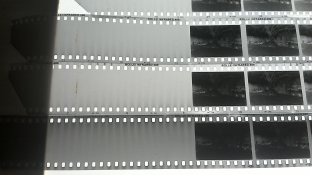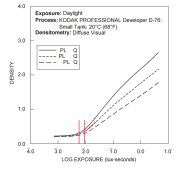Tumbles
Member
I've been experimenting Anneman-Gainer Developer. I found the formula here:
https://www.flickr.com/photos/carljmoss/6244540929
It's meant for stand development, and it's supposed to give a two stop push. My goal is to be able to shoot Rollei Infrared with 720nm filter at ISO 50. From the results I've gotten it looks like this is going to work out, except I'm getting a lot of streaking. A lot of it looks to be coming from the sprocket holes. I only shoot infrared in 120, so I'm not sure if this will be as much of a problem.
Does anyone know of anything I can do reduce this?


https://www.flickr.com/photos/carljmoss/6244540929
It's meant for stand development, and it's supposed to give a two stop push. My goal is to be able to shoot Rollei Infrared with 720nm filter at ISO 50. From the results I've gotten it looks like this is going to work out, except I'm getting a lot of streaking. A lot of it looks to be coming from the sprocket holes. I only shoot infrared in 120, so I'm not sure if this will be as much of a problem.
Does anyone know of anything I can do reduce this?





 my view is a bit more restrictive (clik to enlarge):
my view is a bit more restrictive (clik to enlarge):
